No images yet, I need to get a new adapter for my phone before I can upload the pics, but I have them on my phone! They'll get uploaded tonight probably on this post.
I made it to Richard and Stephanie's place whom I met on warmshowers from Franklin. They run a bed and breakfast called Serenity Bed and Breakfast. They welcomed me into their home and was very hospitable to me, they even let me stay two nights so I could take an entire day to go see Mammoth Cave. The cave is about 8 miles away from here, so it took me about 45 minutes to bike there.
Once there, I signed up for as many tours as I could! After arriving I immediately signed up for the dripstone tour which was in about 15 minutes.
The guide for the tour was a pretty happy guy!

We took a man made entrance that was blasted through a sinkhole. We climbed down into the sinkhole and there was a concrete column with a big metal door on it.
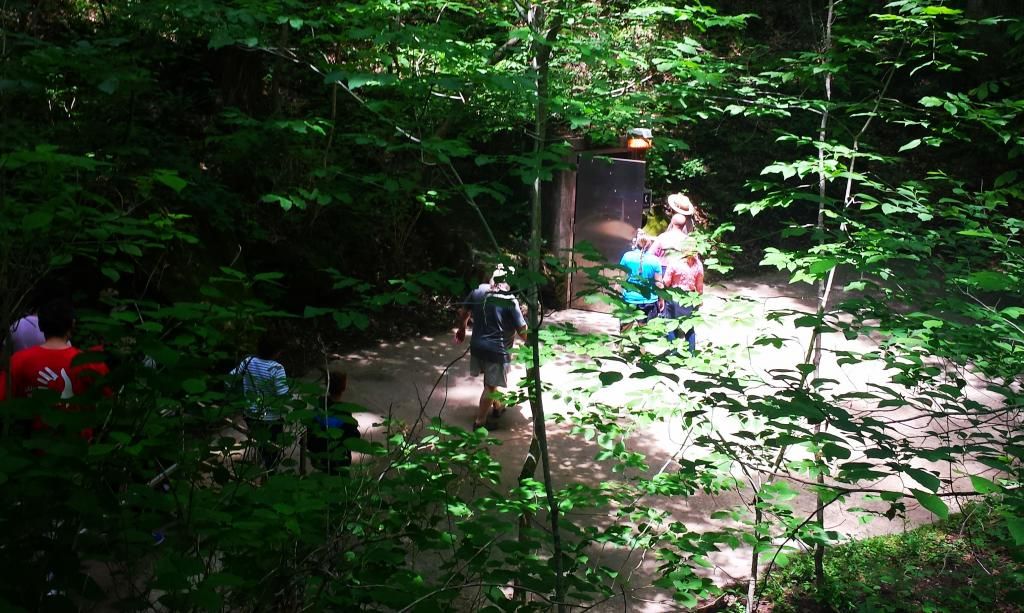
The guide opened the door and we all got blasted with cold, damp air. We immediately began walking down very steep, narrow stairs and catwalks descending straight down both large and small vertical caves that act as drains to let water run down from the surface. Parts of this section were extremely narrow and you had to side step through narrow passageways until we finally reached rock bottom!
Once there, we reached a big room with benches and we all got to sit down while the stragglers caught up and the guide talked to us a little bit about the cave and what we would expect to see!
As we were walking through different tunnels, some of them had perfectly flat ceilings. As tunnels collapse, the layers of rock come down forming new tunnels on top of the old. In these cases, the rocks come down in layers, and the layer that doesn't fall is left as a nice flat ceiling!
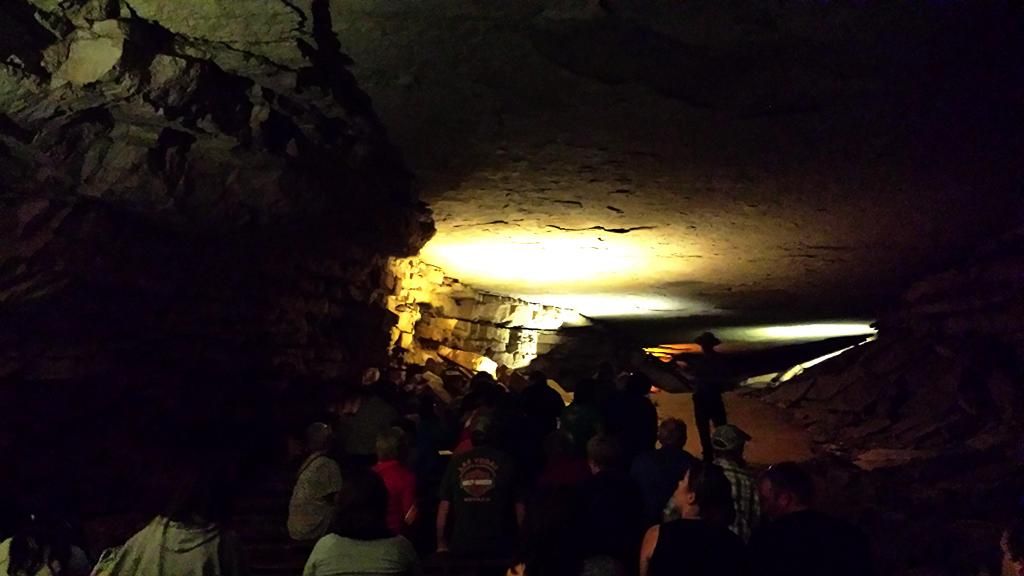
Also, on these flat ceilings, if you look carefully in the low light, there are fossils hidden all over

We descended down about 250 feet before we began to arch back up towards the surface. Near the end of the tour we got to see actual dripstones, stalegmites, stalectites and other really cool, ancient rock formations!
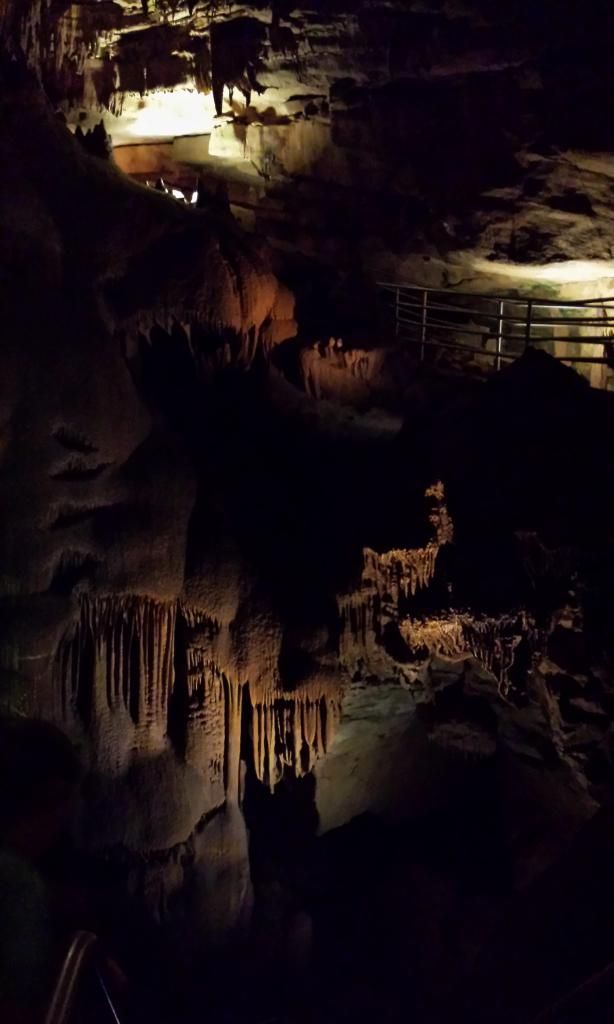
On the other side of this very wet part of the cave, we walked right out onto the surface and that was the end of this tour!
I had an hour downtime before the next tour which was the historical tour. I got a burger and a beer while I waited
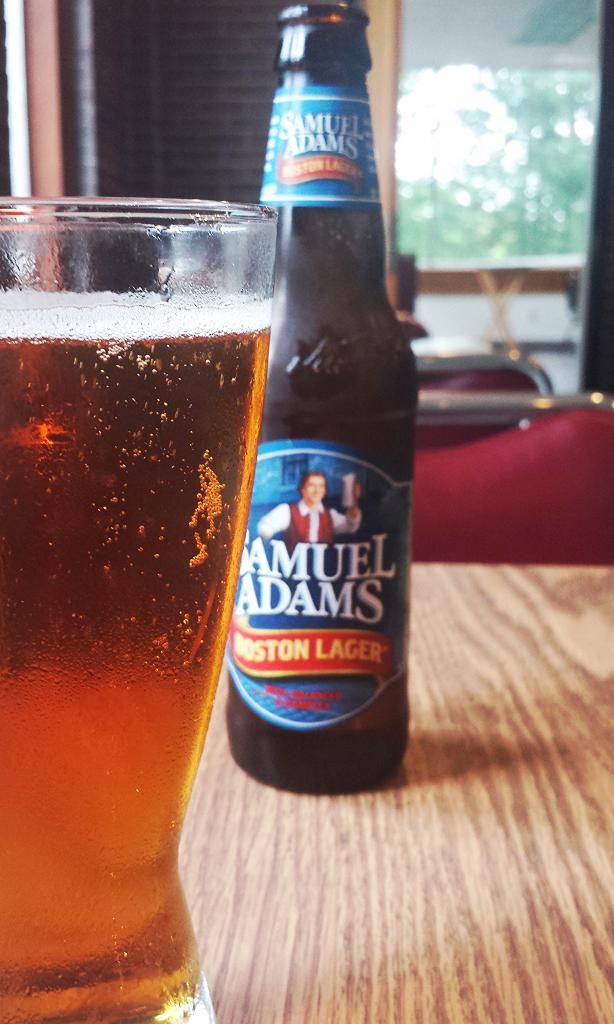
The historical tour was geared much more towards the human history involving the cave. We walked into the huge natural cave entrance
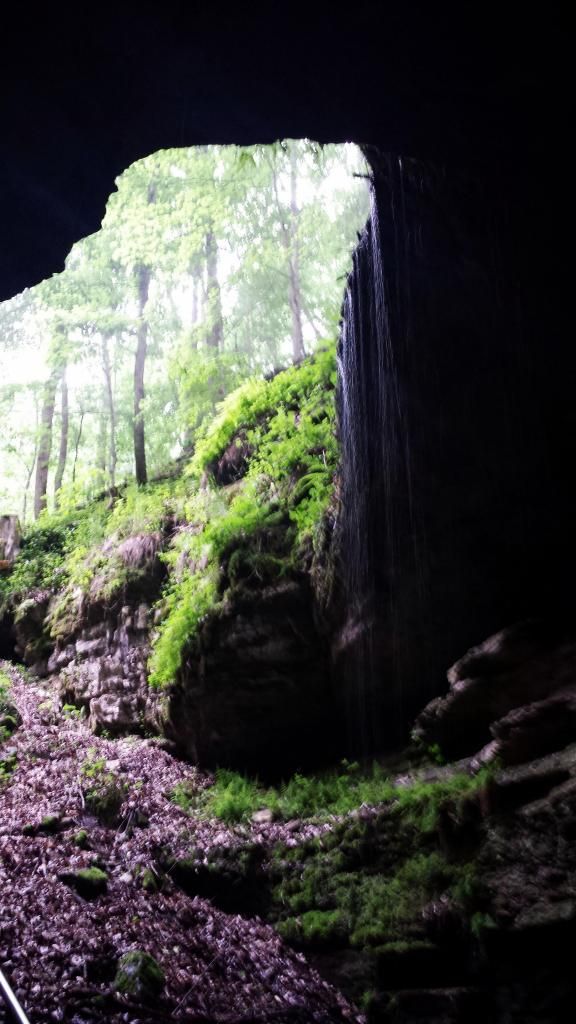
After entering, you walk through this wide, but not very tall passageway into what they call the Rotunda. It's a huge circular room with mining equipment from the war of 1812. The dirt in the cave was rich in potassium nitrate which is extracted to make saltpeter, which is then used to make gunpowder. This cave apparently supplied the country with the majority of it's gunpowder for that war. Original mining equipment was still scattered all over off the trails. Potassium nitrate is also a preservative, so all the wooden equipment is still in pretty good looking shape despite being unused for 200 years (I wouldn't actually use it though).
After we went through a huge cavernous tunnel after the Rotunda, we turned off into a narrow passageways that goes down and we entered fat man's misery.
Fat man's misery is a keyhole tunnel, it was about 8-12 inches at it's narrowest point at the legs and hips, but wide enough to hold your arms out at the shoulders. This tunnel went on for almost half a football field.
After that, the tunnel widened up but shortened. For the next short stretch we had to almost crawl through! Finally after descending a bit more, we reached the lowest point at about 320 feet. From there we had a smooth climb up and finally came to a huge vertical cave where we climbed stairs up 200 feet straight back up to the surface.
By the time I got back to the visitor center, I had about 10 minutes before my last tour! This one was a lantern tour. All the artifical lights were turned off in the tunnels and we were all given lanterns. This tour was supposed to give a taste of what exploring the cave in the 1800s would've been like.

We traveled into the natural entrace just like in the historic tour, but shortly after the Rotunda, we took an alternate route to what they call the Star Chamber. This part of the cave had some interesting history. We walked by an underground tuberculosis sanitarium where they exerpimentally brough a small number of patients to live to see if the cool fresh air would help; it didn't. There were a few stone houses inside the large tunnel. Shortly after, we reached a section with a pitch black ceiling. Apparently the ceiling is made of a pure white mineral that grows out of limestone, but in the 1800s, fire pits and animal grease lanterns stained the entire ceiling black. As the mineral grows slowly, pushing down on the black layer, it chips and little pieces fall leaving fresh white speckles scattered all over. In the lantern light, the speckles twinkle just like stars! We turned down a different tunnel, and all over the ceiling, names were burnt in from tours in the 1800s. Lots of names and dates dating back as far as 1822 are burnt all over the ceiling of this passageway! When we reached the end, it was time to turn around and we came back the way we came to the exit!